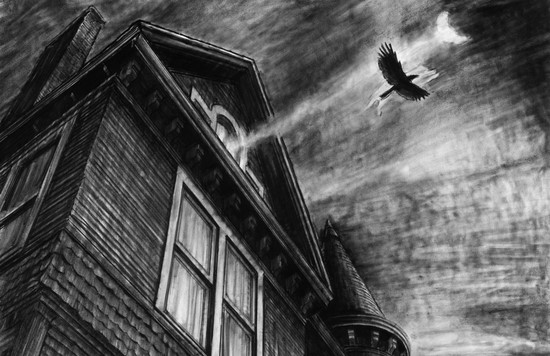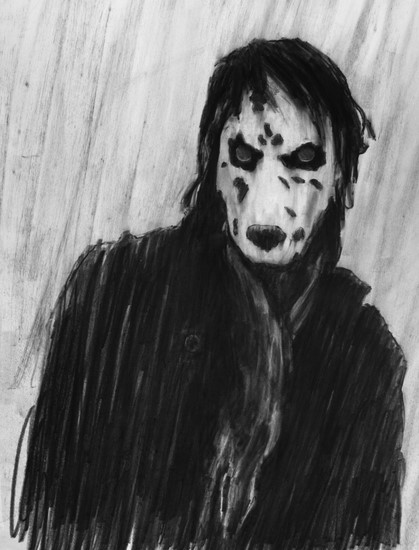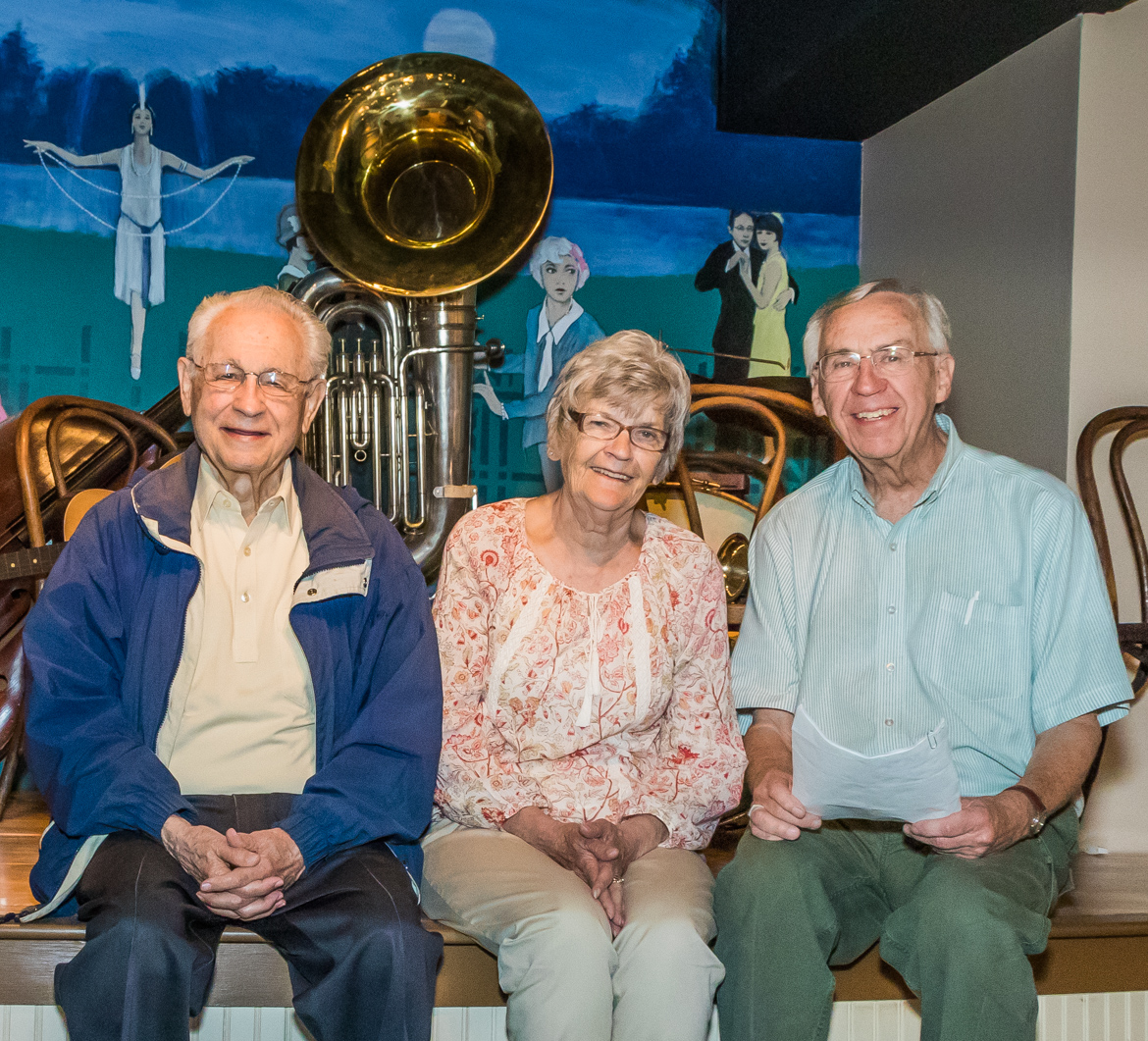
It is with a laugh that Bruce Walters says, "There's no lightness in me."
Walters, a professor of art at Western Illinois University, was at Quad City Arts discussing Halloween Flight, an imposing collection comprising five distinct bodies of work employing autumnal motifs: a story of drawings from which the exhibit draws its name; selections from his Changelings series of drawings of masked people; a pair of lenticular prints (which create the illusion of motion based on the viewer's changing perspective); 15-foot-tall banner paintings under the title Sentries; and the Vultus projected video of 100 mask photographs.
His next project? A series based on the Tibetan Book of the Dead.
Walters might claim that he's obsessed with the dark imagery associated with Halloween - with its origins in the change of seasons from summer to fall, the ancient belief that spirits could enter the world of the living during this transitional period, and fall celebrations of the dead.

Yet one only needs to look at the variety of themes invoked in the work to see that Walters is more interested in exploring the fullness of the holiday than one particular aspect of it, and that it's not all darkness. The Halloween Flight story is simple, nostalgic, and quaint - Walters called it "idyllic" - using a child's vocabulary of motifs (a black cat, the moon, a graveyard, a ghost, trick-or-treaters) in evocative, lovingly detailed drawings. At the other end of the spectrum is Vultus, quietly sinister in its sequence of stark, high-contrast photos of masks, disturbing in both its vividness and inscrutable blankness. (In addition to being shown inside Quad City Arts for this exhibit - which runs through November 19 - Vultus will be projected outdoors at the Figge, Quad City Arts, and three other locations over the next few weeks.)










